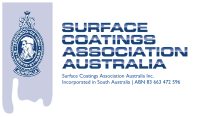Presenters Name: Swati Sharma
Employment Title: R&D Manager
Company: Paintback
Biography: Currently working as Research and Development Manager at Paintback Ltd, focusing on compliance, waste minimisation and resource recovery sector. The role provides numerous opportunities to bridge the gap between technical, commercial and sustainability areas. I am responsible for initiatives to recycle post-consumer water-based paint and packaging while working with universities, councils, and industry partners. I aim to understand the current recycling challenges and deliver sustainable programs that have positive environmental and social impacts on the communities.
Presentation Title: A World of Possibilities in the left-over Paint and Packaging – Paintback Perspective
Presentation Abstract: Australian paint manufacturers sold approximately 150 million litres of Architectural and Decorative (A&D) water-based paint last year. A&D paint waste is considered prescribed hazardous waste and constitutes around 3% of Australia’s liquid hazardous waste category. Waste paint can come from two sources: residual and commercial leftovers. Since paint has a negative environmental impact, waste paint must be managed and disposed of correctly and sustainably.
End-of-life paint management is a massive concern in Australia due to its high volume of consumption, stringent environmental regulations, management costs, and level of VOCs, biocides, and hazardous metals, such as lead, present in older paint. Hence, its disposal creates a significant challenge for the coating sector and resource recovery sectors due to its complex composition and hazardous classification.
Paintback Ltd has been playing a significant role in managing and treating end-of-life paint in Australia. In 2016, Paintback was established as a nationwide independent, not-for-profit organisation with the support of major paint manufacturers in Australia to focus on creating a sustainable and circular solution for leftover paint. Paintback represents the Extended Producer’s Responsibility scheme (EPR) for the paint manufacturing sector. Paintback accepts and treats post-consumer unwanted paint and packaging material. The Paintback Research and Development (R&D) program aims to divert 90% of Australia’s paint and packaging away from landfills and to research new applications for the collected streams. The Paintback R&D team identifies areas where circular economy opportunities can be unlocked for waste paint and packaging.
In its continuous effort to create opportunities to recycle waste paint, Paintback has successfully established a pilot plant facility in Geelong, Victoria. The facility will produce proof-of-concept products based on water-based paint that have been researched and developed through our R&D program.
Current research at Paintback is focused on recycling paint packaging such as metal and plastic, extracting valuable materials from water-based paint as a part of a resource recovery program, and using unwanted water-based paint as an additive in concrete.
Paintback’s current research efforts also include the development of methods to isolate valuable ingredients, such as titanium dioxide, for potential reintroduction into new paint formulations in a circular manner.
Paintback’s overarching goal is to maximise material utilization, extend product life span, increase resource productivity, and reduce waste.
The organisation’s innovative application of waste paint as an admixture in concrete formulations presents a promising avenue for improving concrete properties while simultaneously addressing the issue of paint disposal in landfills. By showcasing these initiatives, Paintback aims to contribute to positive social, environmental, and economic impacts within the Australian economy.


